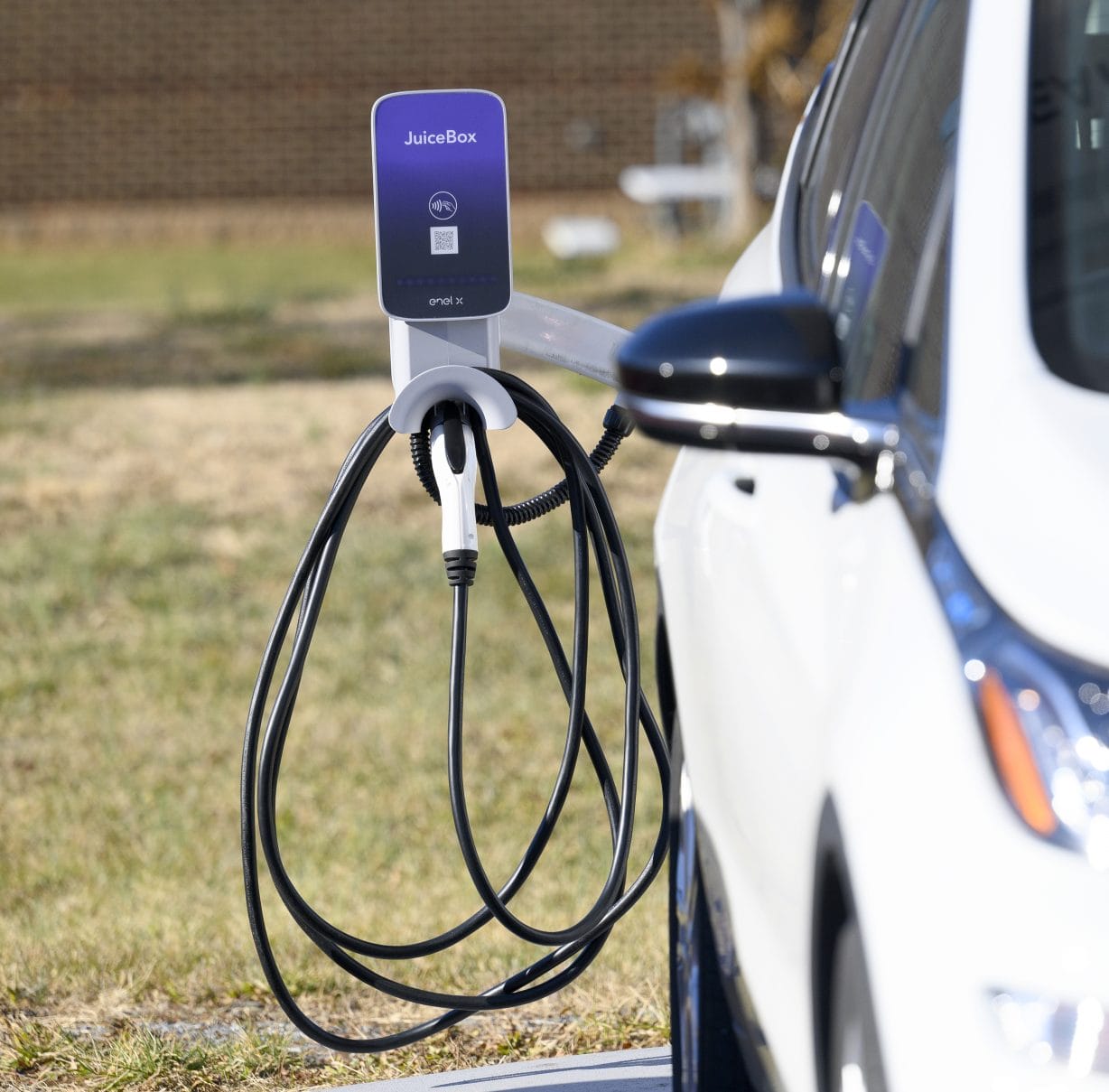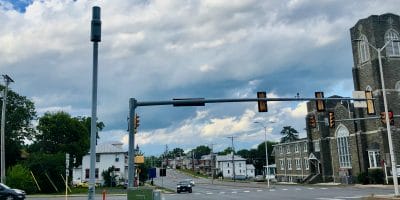
A contributed perspectives piece by the Climate Action Alliance of the Valley (CAAV) – June 2023
Editor’s Note: This is the latest installment of a regular series of contributed news roundups about statewide environmental and energy news. This piece highlights, with links to further coverage in various media outlets, recent environmental news stories of significance to Virginia, with a focus on energy and the environment.
Energy
June’s two biggest stories are the debt ceiling deal that cleared the way for the Mountain Valley Pipeline (MVP) completion and the Virginia Air Pollution Control Board’s vote to withdraw Virginia from the Regional Greenhouse Gas Initiative (RGGI). Both stories made headlines in and outside Virginia. Both outcomes were setbacks for pipeline opponents and RGGI supporters. Here are the stories in headlines (with sources):
Mountain Valley Pipeline
“Debt ceiling deal includes surprise approval of natural gas pipeline championed by [West Virginia Senator] Manchin.” – Politico, May 28
“Debt limit deal would approve West Virginia pipeline, curtail environmental law.” – The Hill, May 28
“Environmentalists in Virginia and West Virginia Regroup to Stop the Mountain Valley Pipeline, Eyeing a White House Protest.” – Inside Climate News, May 28
“The debt ceiling deal bulldozes a controversial pipeline’s path through the courts.” – NPR, June 1
“Kaine’s effort to remove Mountain Valley Pipeline provision from debt-limit deal fails.” – Cardinal News, June 1
“Donations from Mountain Valley Pipeline developers, gas industry have flowed frequently into WV congress members’ campaign coffers.” – Charleston Gazette-Mail, June 1
“Mountain Valley Pipeline approvals OKed as part of debt ceiling deal.” – Virginia Mercury, June 2
“Environmental groups blast Biden capitulation to Manchin on Mountain Valley Pipeline.” – Augusta Free Press, June 2
“MVP developers [said] project completion [is] expected by [the] end of 2023.” – West Virginia News, June 5
“With path cleared for the Mountain Valley Pipeline, opponents weigh next steps.” – Cardinal News, June 5
“Mountain Valley Pipeline seeks dismissal of remaining lawsuits.” – Roanoke Times, June 6
“Climate advocates protest Mountain Valley Pipeline outside White House.” – Washington Post, June 8
“What’s next for the court cases challenging Mountain Valley Pipeline?” – Virginia Mercury, June 9
“Environmentalists may challenge Congress on clearance for the Mountain Valley Pipeline” – WVTF/Radio IQ, June 13
“DEP reissues water permit for Mountain Valley Pipeline thrown out by court for not addressing water quality violations.” – Charleston Gazette-Mail, June 13
“Editorial: Including pipeline in debt bill dismantled a system protecting Virginians.” – Virginian-Pilot and Daily Press, June 14 (See Action Alert below.)
“Mountain Valley Pipeline asks FERC for extension to finish Southgate project in NC.” – NC Newsline, June 15.
RGGI
“Air Board votes 4-3 to remove Virginia from Regional Greenhouse Gas Initiative.” – Augusta Free Press, June 7
“State air board votes to leave Regional Greenhouse Gas Initiative.” – VPM, June 7
“Virginia regulators advance Youngkin plan to leave climate initiative he calls ineffective.” – AP News, June 7
“Virginia Leaves Clean Air Initiative as Wildfire Smoke Fills Sky.” – Newsweek, June 7
“Youngkin Praises State Air Pollution Control Board’s Repeal of RGGI.” – The Roanoke Star, June 7
“Youngkin continues to call RGGI participation a hidden tax, environmental groups considering litigation.” – Virginia Mercury, June 7
“Air Pollution Control Board votes to remove Virginia from Regional Greenhouse Gas Initiative.” – Southern Environmental Law Center, June 7
“Youngkin Moves Forward on Unlawful RGGI Repeal; Now Faces Legal Peril.” – National Resources Defense Council, June 7
“Va. regulators vote to exit regional carbon trading program.” – E&E News, June 8
“Repealing RGGI will only cost Virginians.” – LTE, Richmond Times Dispatch, June 17
“Amazon Has Spent $52 Billion And Counting On Northern Virginia Data Centers.” “Opponents of the Prince William Digital Gateway were dealt another blow … when a judge dismissed a second lawsuit challenging the … 2,139-acre data center corridor proposed just north of the Manassas National Battlefield Park ….” Spotsylvania County’s Comprehensive Plan was amended to be more favorable to data center development. It also changed the zoning for a specific area to allow technology campuses. The Board of Supervisors has several pending zoning requests, most from Amazon; public hearings will provide the opportunity for opponents and proponents to weigh in.” Fairfax County wants to look into what “guardrails” it could put into place given the proliferation of data centers in Northern Virginia. Dominion Energy recently reported that “Virginia power use hit [a] record in December, [and] data centers account for 20% of sales … [but] did not address how data center construction projects were disrupted in Virginia due to its transmission issues.”
“Dominion [Energy is] reviving plans to build a natural gas peaker plant in Chesterfield. [Its] proposal signals [a] shift from [its] renewables-heavy focus of the past few years … as part of its recently announced strategy to invest in more gas generation to meet growing grid demand in the coming years.” The Virginia Clean Economy Act mandates that Dominion “retire all fossil fuel plants [by 2045, well before the scheduled operational life of a new plant]. The law allows utilities to petition the SCC to keep plants open to ensure reliability of electricity supply.”
This ”old-fashioned story” [THE PLUTOCRAT VS. THE MONOPOLY] in The Atlantic is about “a recent victory … that united the Sierra Club, Americans for Prosperity, Amazon, Google, and progressive and conservative members of the Virginia legislature.” The subject: Dominion Energy’s historic influence over Virginia energy policy. A senior Dominion vice-president responded to the article, criticizing the author’s characterization of a 2023 bi‑partisan “reform bill”; decrying the author’s lack of curiosity about the “motivations of the “plutocrat” (Michael Bills, founder of Clean Virginia); and repeating Dominion’s often stated position that Dominion’s “all-in rates [have been] below the national average for many years.” The VP did not distinguish between Dominion’s customers’ rates as compared to their bills, omitting to mention that the latter have been rising, not because of basic rates but due to “rate adjustment clauses”, or riders, that Dominion adds to customers’ basic “rate”.
An Augusta County farmer’s opinion piece about a proposed solar facility provided responses to objections raised by attendees at a recent Staunton City Council. The Council tabled the proposal. Recommending readers contact the City Council, the writer concluded: “In a time when we witness atmospheric rivers, bomb cyclones, and rising seas, we need to move away from fossil fuels…. Staunton can lead the way by setting an example of how to do solar right.”
“More than 17 GW of offshore wind capacity is under construction in the Atlantic Ocean. Lease sales are expanding the industry to new waters as it works to meet federal and state goals.” “Tidewater Community College’s … Skilled Trades Academy is … ramping up all of the skilled trades that can support the offshore wind onshore…. TCC’s expansion is part of a larger effort by businesses, government officials, economic development groups and educators to prepare for an expected increase in demand for an array of skilled and unskilled workers.” “U.S. offshore wind represents a $109 billion revenue opportunity for businesses in the supply chain over the next decade, according to a 2021 report by the Special Initiative on Offshore Wind. ‘We really have a generational opportunity to grow the economy of Virginia,’ … [according to] Matt Smith, the director of energy and water technology for Hampton Roads Alliance….”
Near Virginia Beach, “A plan to bring high voltage cables ashore at Sandbridge as part of a new wind energy farm is … opposed by a group of residents living in and around the beachfront community, while others argue it should be embraced.” Some have concerns because the areas where the cables will come ashore are flood zones. North Carolina joined nearly a dozen other East Coast states [including Virginia] to create a financial compensation program [the Fisheries Mitigation Project] that would cover economic losses within the fisheries industry caused by Atlantic offshore wind development. The US General Accountability Office, the “independent watchdog agency of Congress agreed to look into the impacts that offshore wind development could have on the environment, fishing industry and other areas.”
A Southwest Virginia editor, referencing the Governor’s announced desire for small nuclear reactors (SMRs) in Virginia, noted that Virginia isn’t the only state looking at this technology and may well have competition. A “company [that] … designs and maintains power plants, hopes to train more nuclear technicians through its partnership with Central Virginia Community College in Lynchburg.” The LENOWISCO Planning District Commission (serving Lee, Wise, and Scott Counties and the City of Norton) announced results of an engineering firm’s study … showing that “far Southwest Virginia has the capabilities to be a ‘competitive hosting ground’ for small modular nuclear reactors … in “seven potential sites.”
“InvestSWVA, a public-private economic development initiative, hosted “a show of energy and economic development projects [in SW Virginia] for 20 officials representing coal communities in 10 states…. [The event was] designed to highlight programs and projects underway for economic diversification…. The first stop was … a former coal mine site … [now] home to the Wise Solar Project … [and] the first [question] was about the region’s interest in becoming home to a … SMR.”
Climate and Environment
“Some [coastal] cities are putting water back into the ground, a process called managed aquifer recharge, to stabilize land subsidence” and to “stop their land from sinking.” Hampton Roads Sanitation District [that serves Norfolk] set up a pilot “recharge system that treated wastewater and recharged the aquifer with 1 million gallons a day…. [Because the land is still rising] a little bit, in 2026, they will operate their first full-scale facility, which will recharge 34 million gallons per day.”
“Albemarle County is part of a program designed to help both new and existing buildings reduce their impact on the environment. Commercial Property Assessed Clean Energy (C-PACE) is a program through which businesses can apply for financing to cut down on greenhouse gas emissions.” “Charlottesville emission levels [are] expected to rise slightly; new initiatives [are] ramping up.”
“Support from the Virginia Outdoors Foundation has doubled the size of the … [Chestnut Ridge Natural Area Preserve] to protect significant ecological forest core with old-growth trees. By purchasing 775 acres …Virginia Department of Conservation and Recreation (DCR) … brought the size of the preserve in Giles and Bland counties to 1,596 acres.” It was “named after the American chestnut.”
A blogger expressed concerns about the Canadian corporate behemoth that is removing so many menhaden from the Chesapeake that it may endanger the fish and also hurt Virginia’s fishing industry. “Menhaden, a kind of herring that has been called the most important fish in the sea, are a keystone species in the Atlantic, serving both as a critical food source for predatory fish, marine mammals and birds, and as a consumer of vast quantities of algae that would otherwise clog waterways and shade out underwater vegetation.” She blames regulators and politicians for not properly addressing the problem. “A group of anglers in Maryland has taken legal action against Virginia fishery managers over harvesting of menhaden in the Chesapeake Bay.” The same regulator is taking a different approach to managing the Bay’s crab population, “recommending increases to crab catch limits this fall and next spring but keeping in place the summer reductions instituted last year after surveys found the population had plummeted.”
“A new report [The Worsening Winds report] details Coastal Virginia’s risk and susceptibility to future hurricanes as a result of changing weather patterns due to climate change…. [It’s] a risk assessment report that aims to quantify and measure how climate change impacts on hurricane winds 30 years into the future will impact local communities across the country…. Hampton Roads localities rank high in some of the report’s metric rankings. One example is the counties and cities [that] “will likely face the great absolute increase in their annual likelihood of experiencing Category 1 hurricane wind conditions.”
“The Northern Virginia Regional Commission evaluated the climate-change readiness of the region and its military installations – identifying 129 projects to address readiness gaps…. Of the 129 remedial projects identified, 43 target potential coastal and inland flooding hazards.… Thirty-two projects focus on energy provision, with the goal of ensuring access to stable energy sources…. Several involve building solar-powered microgrids to ‘maximize the capacity of renewable energy generation and battery storage to minimize reliance on diesel-powered generation.’”
“The Virginia Department of Environmental Quality added the Shenandoah and Northern Piedmont regions of the Commonwealth to its drought watch advisory. The Eastern Shore of Virginia … was already under a drought watch advisory. Now Augusta, Rockingham, Shenandoah, Frederick, Page, Warren and Clarke counties in the Shenandoah region are included. Greene, Madison, Rappahannock, Orange, Culpeper, Louisa, Spotsylvania and Stafford counties in the Northern Piedmont region are included.” “Drought conditions are getting worse in D.C., Maryland and Northern Virginia. The lack of rain across the region, 7 to 9 inches below normal since the beginning of the year, is raising concerns about water supply, causing tap water to taste and smell funny, and hindering the production of hay for feeding cows…. The rainfall deficit has also dried out soils across the region. Moisture content in the top 20 centimeters of soil are less than 20 percent of the historical average, with some areas at or less than 2 percent, according to data from NationalSoilMoisture.com…. The National Oceanic and Atmospheric Administration’s precipitation outlook for late June shows a 33 to 40 percent chance of above-normal rainfall, while its outlook for July, August and September gives equal chances of above-, below- or near‑normal precipitation.”
The “Supreme Court [rolled] back Clean Water Act protections for wetlands”. “Virginia is home to about 1 million acres of wetlands, from Chesapeake Bay marshes to the Great Dismal Swamp to Blue Ridge fens. After last week’s Supreme Court ruling in Sackett v. EPA, many of them are no longer protected under the Clean Water Act.” But “environmental groups say there will be little change in Virginia because of the state’s strong wetlands regulations…. [T]he Virginia Farm Bureau Federation … praised the ruling as a necessary reduction of bureaucracy for farmers.”
“[T]he University of Maryland Center for Environmental Sciences (UMCES) [annual] report card on Bay health [repeated its ‘C’ rating]…. Of the seven indicators [used], there were improvements in water clarity, nitrogen, phosphorus and aquatic grasses. The report “suggests that major adjustments are needed in existing programs — and perhaps public expectations — to improve the Chesapeake’s health.” Although conditions in the Bay overall are improving, many tributaries still have poor scores, and scores are particularly bad in many Eastern Shore watersheds.“ The report …”found strong disparities between communities in different parts of the bay’s watershed in terms of health, economics and social justice concerns.”
Action Alert…
There are safety concerns about the Mountain Valley Pipeline: “Pipe for the project has been sitting outside, in some cases for over 4 years, and is unsafe to use.” Wild Virginia and CAAV would like you to call Senators Kaine [(202) 224‑4024] and Warner [(202) 224-2023] and ask them to tell the Federal Energy Regulatory Commission (FERC) “to require off-site recoating of the pipe for Mountain Valley Pipeline to reduce the risk of leak or explosion.”
Check out …
- This USDA Farm Service Agency survey of the top 25 Virginia counties’ farmland acreage. Rockingham County is 4th; Augusta County is 2nd.
- Virginia’s favorite flowers, according to a Gardening Chores study.
- This information about Harrisonburg’s June “Pollinator month” activities.
- A new bridge over “a relatively new hiking and biking trail in the George Washington National Forest…. The newest portion of the trail itself is multi-use single track that is part of the GWNF’s North River District and stretches across the Rockingham and Augusta counties’ lines.”
- The “2023 Virginia Hurricane Evacuation Guide which gives actions to take in the event of a tropical storm.”
- Our Virginia Outdoors Coalition that represents “land trusts, trail advocates and conservation groups and announced its official launch at the beginning of June — which was proclaimed Great Outdoors Month in Virginia this year by Governor Glenn Youngkin.” Details are here.
Why not …
- Learn about beekeeping?
- Learn how you can replace your lawn with a pollinator garden?
- Read a Harrisonburg resident’s opinion on whether you could replace your car with an EV bike?
- Watch this brief video showing how “Louisa County High School is giving students a head start in the [solar] industry by offering an energy and power class”? “Solar energy could power 40 percent of the nation’s electricity and provide as many as 1.5 million jobs in the next 10 years.”
- Learn how to achieve savings from energy efficiency and renewable energy purchases, using this US Department of Energy tool.
- Find out about the spread of the “red imported fire ant, an invasive species known for its painful sting, from Southeast Virginia … to other parts of the state.” Let’s hope they don’t head north.
The Climate Action Alliance of the Valley (CAAV) is a non-profit, grassroots group in the Central Shenandoah Valley that educates legislators and the public about the implications of the Earth’s worsening climate crisis.












